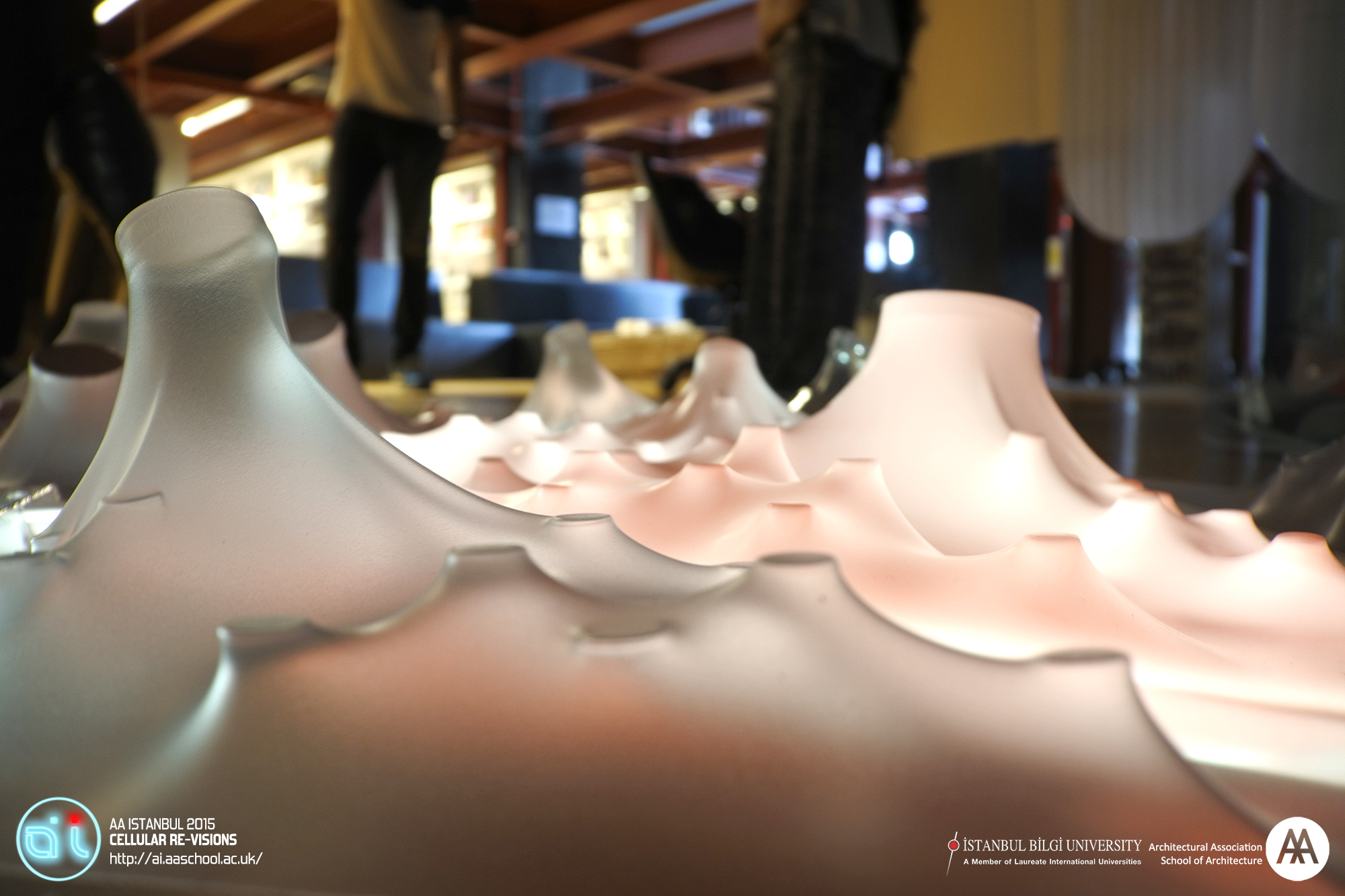How can we alter the perception of an existing architectural element through intervention? During AA Istanbul Visiting School 2015, design explorations have revolved around this problematic, whereby the existing architectural element has been defined as the entrance façade of Istanbul Bilgi University Department of Architecture. The design brief has been the creation of a complex partitioning system that acts as a parasitic addition to the façade. This task has been investigated by focusing on a combination of structural, morphological, and contextual factors which the design intervention was expected to respond to in order to differentiate its material and geometrical organization. The main objective of large-scale fabrication is to investigate the prototype as an “analog machine”, whereby participants can examine the transformation of systems they have devised in digital simulations into material configurations embedded with specific types of data. In this respect, it is crucial to consider real world constraints such as gravity, physical forces, and loads in the digital simulations in order to create analogous correlations between the computational and physical paradigms..
Physical material investigations have been based on the use of vacuum-forming techniques with an innovative approach, whereby the principles of vacuum forming have been transformed into design inputs. This approach has enabled the simultaneous inter-relation of digital and physical experiments. For the fabrication of the facade installation, design explorations focused on form-finding techniques with PVC, a material which is durable for external weather conditions, through the implementation of vacuum-forming processes. The changes in the material behaviour of PVC due to various vacuum and temperature settings were analysed and catalogued. This information served as design parameters for digital design variations.
The final installation, with dimensions of 9 meters in length and 3 meters in height, integrates basic design parameters such as texture, light, shadows, colours, and light transmittance. While the installation acts a secondary skin during the day, at night it becomes imbued with varying patterns of light, exposing the varying levels of transparency and shadow among its individual elements.
Programme Director: Elif Erdine
Host School Coordinator: Prof.Dr. Sebnem Yalınay Çinici
Visiting School Director: Christopher Pierce
Tutors: Aslı Aydın, Cemal Koray Bingöl, Dağhan Çam, Elif Erdine, Alexandros Kallegias, Benay Gürsoy Toykoç , Tuğrul Yazar, Gamze Gündüz
Students: Simge Diken, Gizem Akın, Özgüç Bertuğ Çapunaman, Oğuzhan Çokgunlu, İlkan n Cemre Acar, Sezen Kıvılcım Sözeri, Deniz Çelik, Esin Bilge Çelik, Pınar Aksoy, Merve Başot, Verda Ayşe Sezgin, Çağla Şaşmaz, Damla Aydın, Berk Ekmen, Merve Boy, Dilara Kayacan, Elif Doğan, Elif Sena Arabacı, Yıldırım Erbaz Eslam Abd El-Khalek, Doruk Biçgi, Yunus Emre Demirkıran, Bilge Kardelen Bekiroğlu, Burak Ertuğrul Güney, Dilruba Ağaçcıoğlu, Ceren Bilen, Simay Uluca Lara Alkhouli, Sarah Abu Al Hamail, Samera Taye, İrem Papila, Sara AL Jabi, Song Ren, Elif Beyza Öngüt, Youssef Ibrahim, Levent Özruh, Jing Wei Qian, Ariss Majid, Emine Ece Emanetoglu, Seda Öznal, Ilknur Güngör.






For more information visit : AA Istanbul Visiting School 2015 / Cellular Re-Visions




